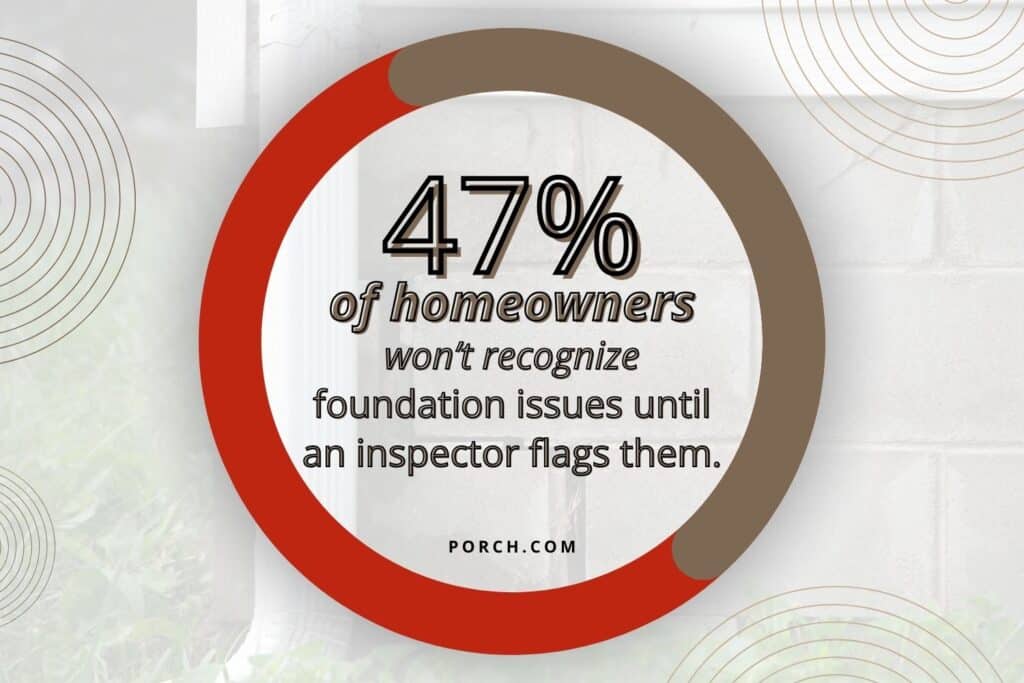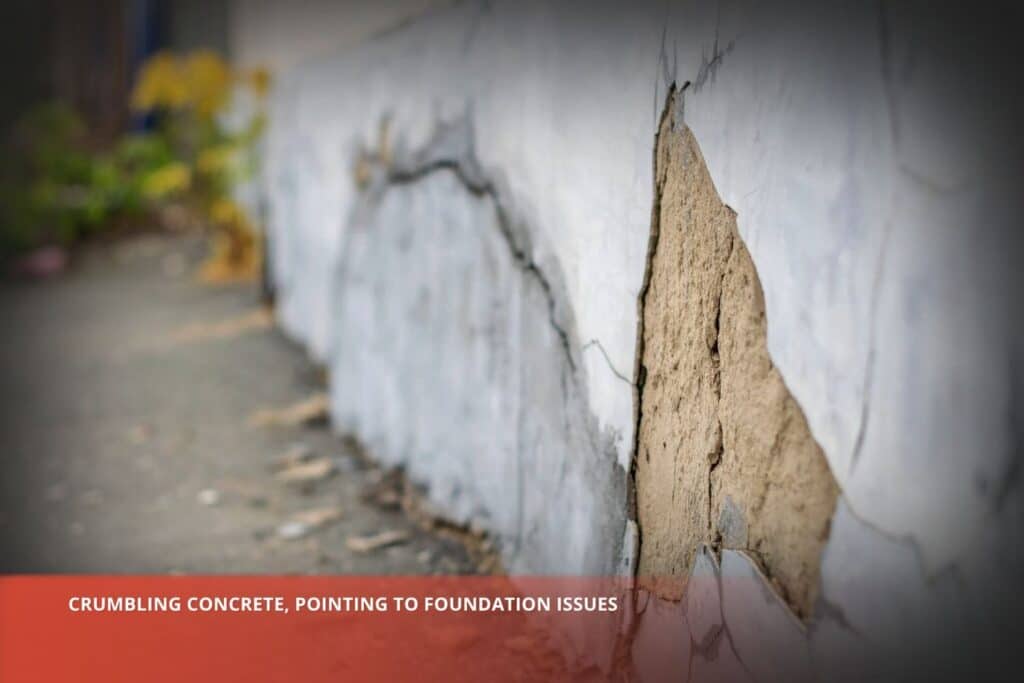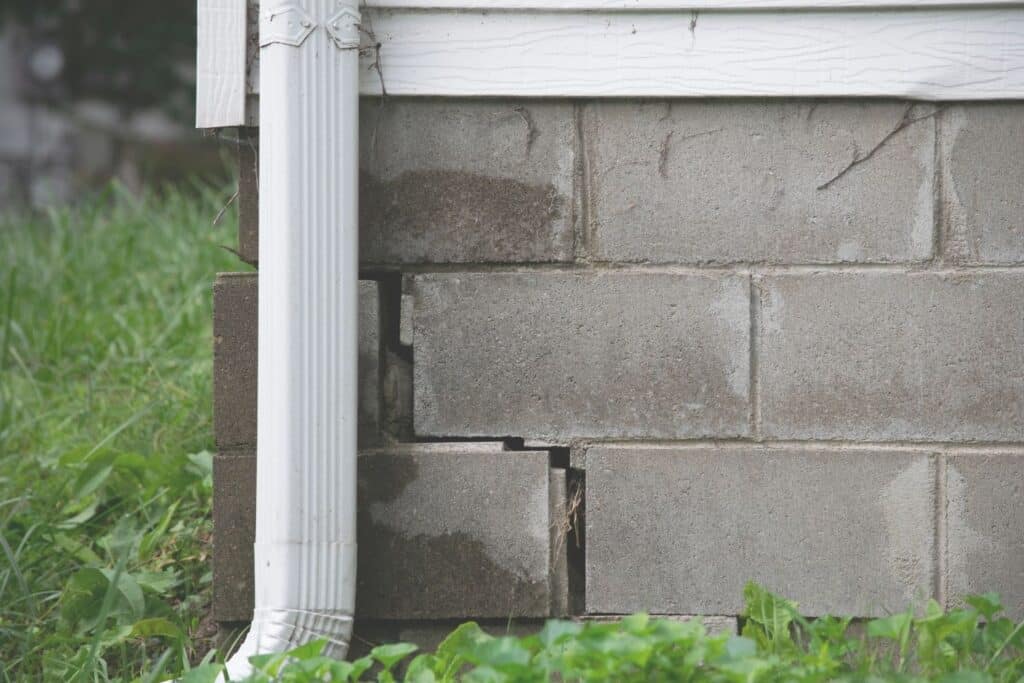Concrete footings and foundations might seem solid and unshakable, but they don’t last forever. Over time, your home’s structure can develop issues that quietly compromise its stability. In Atlanta, where soil conditions shift and rainfall is frequent, these problems can show up in homes of any age.
While cosmetic damage may be easy to spot, foundation damage often hides in subtle signs that many homeowners overlook. Nearly half of homeowners don’t recognize early foundation issues until a professional inspection points them out.
Here’s what to watch for, why it matters, and how to respond if you suspect trouble beneath your home.
About Foundations and Footings
Before we dive into warning signs, let’s quickly define what we’re talking about.
- Footings are the base layer that supports the foundation walls. They’re typically made of poured concrete and spread the weight of your home across a wider area.
- Foundations are the structural walls that sit on top of those footings. They hold up the home and distribute weight down into the soil.
If the footing fails, the foundation weakens. If the foundation cracks or shifts, the entire structure can suffer.

1. Cracks in the Concrete
Not all cracks are serious, but some are signs of structural stress. Over time, homes naturally settle. Minor vertical cracks may appear as part of that process. But when cracks become wider, longer, or appear in problematic patterns, they need attention.
What to look for:
- Horizontal cracks, especially in basement or crawlspace walls, can indicate pressure from surrounding soil or water
- Stair-step cracks in concrete blocks or brickwork often point to uneven settling
- Wide vertical cracks that grow over time may show that the footing is shifting
Use a pencil or coin to check the width. If the crack is larger than one-eighth of an inch or keeps growing, call an inspector.
2. Floors That Feel Uneven or Soft
Homes’ concrete foundations and footings set the tone for the entire structure. When it moves, everything else above it moves too.
Watch for:
- Sloped flooring, especially near walls or corners
- Soft spots or spongy areas when walking
- Gaps between flooring and baseboards
In many homes, this happens when the footing has begun to sink into unstable soil. It may feel subtle at first, but over time, it becomes more noticeable.
3. Doors and Windows That Don’t Fit Right
Framing relies on a level foundation. When the foundation shifts or sags, doorways and windows start to warp and bind.
Signs include:
- Doors that won’t latch or swing open on their own
- Windows that stick or feel uneven when opening
- Visible gaps between the frame and drywall
You might also see diagonal cracks spreading from the corners of doors and windows. This often shows that pressure is building unevenly throughout the structure.
4. Moisture Around the Base of the Home
Water and concrete don’t mix well when it comes to long-term health. Persistent moisture can weaken concrete, erode footings, and create pressure against foundation walls.
Look for:
- Pooling water after a rainstorm
- Overflowing gutters or poorly directed downspouts
- White powdery buildup (efflorescence) on basement walls
- Mold, mildew, or musty smells in crawlspaces
In Atlanta, where rain is frequent and humidity stays high, managing water is one of the most important parts of protecting your foundation.

5. Concrete That’s Flaking, Crumbling, or Discolored
Surface damage may seem harmless, but it can be the early stage of concrete breakdown. Spalling, chipping, and discoloration are often the result of repeated wet-dry cycles, freeze-thaw effects, or chemical exposure.
Common indicators:
- Thin layers of concrete peeling off or crumbling under pressure
- Rust-colored stains (often from rebar corrosion inside the concrete)
- Uneven or stained footings along the perimeter of your crawl space or basement
This type of damage exposes deeper material to moisture and air, speeding up deterioration if left untreated.
Why Foundation Damage Happens
Homes in the Atlanta area face a unique mix of challenges:
- Expansive clay soil absorbs water during heavy rain and shrinks during dry spells. This constant change puts pressure on foundations and can cause footings to shift.
- Older homes may have shallow footings or outdated construction methods that don’t meet today’s structural standards.
- Tree roots near the home can dry out the soil or push against footings over time.
- Improper grading or poor drainage keeps water against the foundation, which weakens concrete and creates settlement.
Understanding local risks helps explain why foundation inspections are so valuable during the buying or selling process.
When to Get a Professional Assessment
It’s easy to ignore cracks or settling when they don’t seem urgent. But they don’t go away if you wait. Even minor structural issues can impact your home’s resale value. According to Zillow, homes with visible foundation damage may sell for 10–20% less.
You should schedule a foundation inspection if you notice:
- Multiple signs from the list above
- A history of water issues or poor drainage around your home
- Sudden changes in how doors, windows, or floors behave
- Visible damage to footings or crawlspace walls
At Champia, we specialize in evaluating the condition of structural systems during real estate transactions. We also offer pre-listing and maintenance inspections for homeowners who want to stay ahead of problems.
What Happens During Inspection?
Our inspectors look for visible signs of damage, shifting, or poor construction of concrete footings and foundations. We also use moisture meters, laser levels, and detailed measurements to check for uneven settling.
You’ll receive:
- A detailed report with photo documentation
- Straightforward explanations about what’s normal and what needs attention
- Guidance on whether you need a structural engineer or contractor to step in next
We don’t upsell or push repairs. Our goal is to give you the information you need to protect your investment.
Conclusion
Damage to concrete footings and foundations often starts small. A few hairline cracks or a sticky door might not seem like much at first. But over time, those signs can point to deeper issues beneath the surface.
Catching problems early gives you more options, lower repair costs, and greater peace of mind. If you’re buying, selling, or just want to know what’s going on under your home, schedule an inspection with Champia today.
